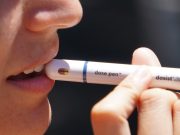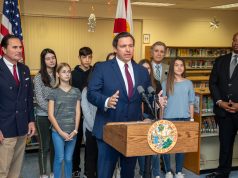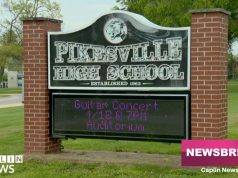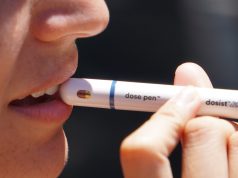Before closing out its current term, the Supreme Court ruled on three major cases that will affect the lives of millions of Americans in the coming months and years.
Students, young professionals and members of the LGBTQ+ community saw major setbacks as the court’s conservative majority ruled against using race as a factor in college admissions, knocked down President Biden’s student loan relief plan and gave an opening for certain businesses to deny services to individuals based on the providers’ religious views.
These decisions will affect each region in the country differently, but as the Sunshine State deals with rising political tensions in issues such as academic freedom, the protection of individuals in the LGBTQ+ community and an increasing financial strain for young professionals in the state, June’s Supreme Court decisions may prove to be uniquely consequential for Floridians.
Student loans

After the high court struck down President Biden’s loan relief plan, intended to eliminate up to $20,000 in student debt for tens of millions in the country, borrowers nationwide will likely need to restart their loan payments by the end of the year.
In Florida, almost three million people – about 12 percent of state residents – have outstanding federal student loans, according to the U.S. Department of Education.
“It’s definitely something I didn’t think I was going to have to handle again until recently, so it’s going to be more of a burden for me and my family,” said Thomas Marin, a graduate student at Florida International University.
Marin studies English literature and has one year left to complete his degree. He shares the stress of student loans with others in his life.
“There’s more than one person in my household that has student loans, and not paying them for such a long time has allowed us to sort through COVID and other situations (…) so it’s going to be tough,” said Marin.
The student loan payment and interest accruement paused in March 2020 during the height of the pandemic and had been extended nine times. The Biden administration had considered yet another extension, but was waiting for the court’s ruling.
People carrying student debt should start by figuring out what has changed since they last made student loan payments, according to the Education Department. But in the case of many recent graduates like Marin, who have not made a single payment towards their student loans, they need to find out who their loan provider is and how to set up a payment plan as soon as possible.
Payees can check their student loan provider by entering the Federal Student Aid website.
Although President Biden has mentioned his intentions to reinstate a new plan to pardon a certain amount of student loans, there is still a lot of uncertainty around the subject. It is unclear if this new plan would again be challenged by the courts or if it would address the main issue of raising tuition costs. Biden himself has said that any new proposal would entail a smaller amount and take “a long time” to implement.
Affirmative action

In Florida, the use of race-conscious university admissions has been banned since 1999. Although the SCOTUS decision will not affect students applying to universities within the state, Florida could be an example of how this ruling might affect higher education institutions nationwide.
In the decades since the state banned the use of race in university admissions, Black and Hispanic students have been increasingly underrepresented in Florida public institutions, according to data provided by the National Center for Education Statistics.
In 1999, 23 percent of high school seniors in Florida were Black. In that fall, there were only 18 percent of Black undergraduate freshmen. In 2007, 22 percent of high school seniors were black, but the share of Black undergraduate freshmen had dropped to 15 percent.
Hispanic enrollment has also followed a similar trend. In 2008, 22 percent of Floridian high school graduates were Hispanic, and only 18 percent of freshmen came from Hispanic backgrounds.
In the two decades since race-conscious admissions were banned in Florida, the share of Hispanic high school graduates has grown by 19 percent, but Hispanic enrollment has stayed underrepresented in public institutions. In 2019, 33 percent of high school graduates were Hispanic, while Hispanics only made up 27 percent of public university freshmen.
“We’re not going to see it tomorrow, we’re not going to see it next month, we’re going to see it in the next 10 years, the next generation,” said Melba Pearson, a South Floridian civil rights lawyer. “When you have folks that have gone to school in pretty much almost homogeneous environments.”
Her main concern is that this measure will make it more difficult for universities to create and maintain diverse student bodies, if race and other factors are taken out of the picture.
“If you’re in a school where you have one teacher assigned to 60 kids and not everybody gets a textbook, if you’re coming to school hungry because you come from an under-resourced community, your outcomes are going to look a lot different than somebody who had all the comforts to excel inside and outside the classroom,” Pearson adds.
Anti-discrimination laws

The Supreme Court also decided that the constitutional right to free speech protected the rights of certain business providers to deny their services to same-sex couples.
“Today, the Court, for the first time in its history, grants a business open to the public a constitutional right to refuse to serve members of a protected class,” wrote Justice Sonia Sotomayor in her dissenting opinion.
Sotomayor considers this ruling as giving businesses a new “license to discriminate.”
In recent years, critics of Florida Gov. Ron DeSantis’ administration argue that it has become increasingly hostile to members of the LGBTQ+ community. From laws banning funding for diversity, equity and inclusion programs in public universities to limiting gender-affirming care for minors, they say the DeSantis administration has taken active steps to disenfranchise LGTBQ+ individuals.
Civil rights organizations, such as the Human Rights Campaign, have issued concerns about Florida’s capability of ensuring safety for members of this community, while some groups have gone as far as issuing travel advisories against visiting the state. Recently transgender and queer people have started to leave the state for concerns over their safety.
In the context of Florida, where organizations, including the Anti-Defamation League, have reported record numbers of anti-Semitic hate crimes during 2021, this new ruling creates concerns about how it could affect not only the LGBTQ+ community but also other protected groups.
“A website designer could equally refuse to create a wedding website for an interracial couple, for example … A stationer could refuse to sell a birth announcement for a disabled couple because she opposes their having a child. A large retail store could reserve its family portrait services for ‘traditional’ families. (…) , the immediate, symbolic effect of the decision is to mark gays and lesbians for second-class status,” Sotomayor wrote.
The justices return for a new term the first week of October, and observers are already looking at some potential rulings that could affect communities of color. This includes a look at whether the federal Consumer Financial Credit Bureau, that was created to protect from deceptive financial practices, was properly created and funded.

































